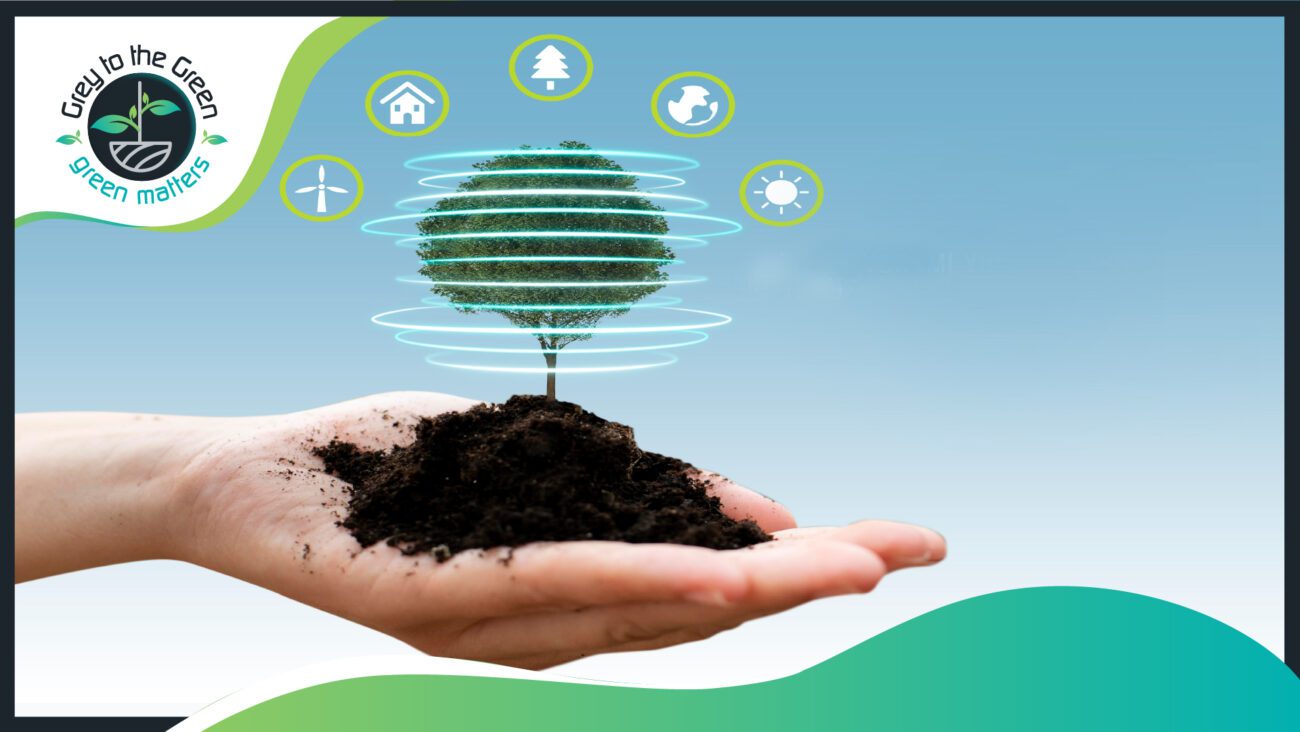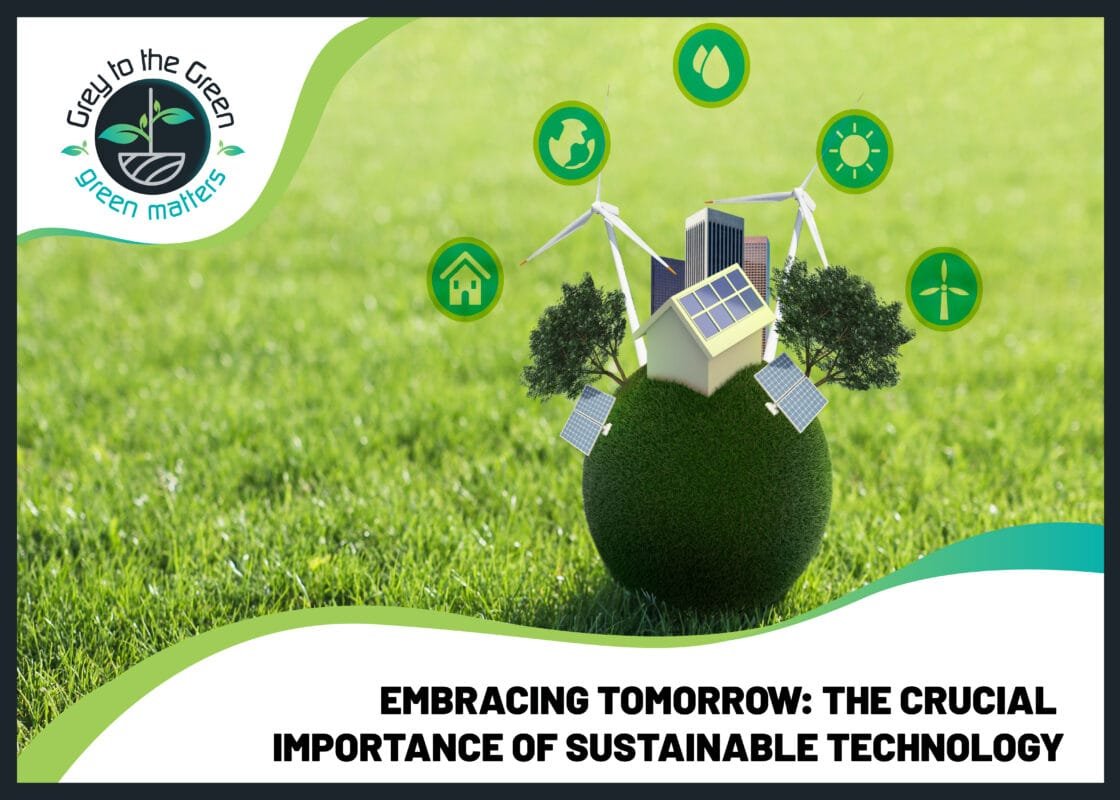Sustainable development is a holistic approach that recognizes the interdependence of economic, environmental, and social well-being. It emphasizes responsible resource management, environmental conservation, and social equity to meet the needs of the present without compromising the ability of future generations to meet their own needs. This concept is crucial because it addresses the pressing challenges of our time, including climate change, resource depletion, poverty, and inequality. Sustainable development seeks to strike a delicate balance between progress and preservation, ensuring a prosperous and equitable future for all while safeguarding the planet’s natural resources and ecological integrity.
Technology plays a pivotal role in addressing sustainability challenges and is a powerful tool for driving positive change on multiple fronts.
- Efficient Resource Management: Advanced technologies enable efficient resource management, reducing waste and environmental impact. Smart grids, for example, optimize energy distribution, leading to lower energy consumption and greenhouse gas emissions.
- Renewable Energy: Technology has revolutionized the energy sector with the proliferation of renewable energy sources such as solar and wind power. These clean technologies reduce dependence on fossil fuels, mitigating climate change.
- Data Analytics: Big data and analytics help monitor and manage ecosystems. For instance, remote sensing and geospatial data assist in forest conservation and biodiversity preservation.
- IoT and Smart Cities: The Internet of Things (IoT) is integral to creating smart cities that optimize resource use, reduce pollution, and improve quality of life. Smart transportation systems and waste management are prime examples.
- Clean Transportation: Electric vehicles and advancements in battery technology are making transportation more sustainable by reducing emissions and reliance on fossil fuels.
- Circular Economy: Technology facilitates the transition to a circular economy where products and materials are reused, refurbished, or recycled, minimizing waste and resource depletion.
- Access to Clean Water: Water purification technologies provide access to clean drinking water in regions facing scarcity or contamination issues.
- Education and Awareness: Technology spreads awareness about sustainability challenges and solutions. Online platforms, social media, and educational apps foster a global community dedicated to positive change.
- Global Collaboration: Digital communication tools enable global collaboration on sustainability initiatives, fostering a collective approach to tackling complex issues.
In essence, technology acts as an enabler, accelerating progress toward a sustainable future. Its potential lies in its capacity to enhance efficiency, foster innovation, and connect individuals and organizations worldwide in pursuit of common sustainability goals. It empowers us to make informed decisions, develop sustainable solutions, and collectively work towards a more equitable and environmentally responsible world.
Renewable Energy

Technology is revolutionizing the energy sector, driving a transition towards cleaner and more sustainable energy sources. Innovations such as solar panels, wind turbines, and energy-efficient systems are at the forefront of this transformation, significantly reducing carbon emissions.
Solar panels harness the sun’s energy and convert it into electricity, offering a renewable and abundant power source. Advances in solar cell efficiency and cost reduction have made solar energy increasingly accessible. Homes, businesses, and even entire communities are adopting solar power to reduce their reliance on fossil fuels and lower carbon footprints.
Wind turbines, another key innovation, capture the kinetic energy of the wind and convert it into electricity. These towering structures are becoming a common sight in windy regions, providing clean and reliable power. Technological advancements have improved turbine design and efficiency, making wind energy a competitive and scalable solution for carbon emission reduction.
Energy-efficient systems, including smart appliances, LED lighting, and optimized HVAC (Heating, Ventilation, and Air Conditioning) systems, play a crucial role in curbing energy consumption. These technologies minimize wasted energy, lower electricity bills, and decrease carbon emissions by reducing the demand for power generated from fossil fuels.
Collectively, these innovations are reshaping the energy landscape, reducing carbon emissions, and promoting a more sustainable and environmentally friendly energy mix. As technology continues to advance, the transition to cleaner energy sources becomes increasingly achievable, offering hope for a greener and more sustainable future.
Smart Cities
Let’s see how technology is enhancing various aspects of smart cities, including urban planning, transportation, waste management, and resource efficiency:
| ASPECT | TECHNOLOGY CONTRIBUTION |
| Urban Planning | – Geographic Information Systems (GIS) for spatial data |
| – Urban modeling and simulation for future city planning | |
| Data analytics to optimize land use and infrastructure | |
| – Citizen engagement platforms for input and feedback | |
| Transportation | – Intelligent Traffic Management Systems (ITMS) |
| – Electric vehicles and charging infrastructure | |
| – Real-time transit tracking and ride-sharing apps | |
| – Smart parking solutions for reduced congestion | |
| Waste Management | – IoT-based waste bins that signal when full |
| – Waste sorting technologies for recycling efficiency | |
| – Fleet management systems for optimized waste collection | |
| – Data analytics to reduce waste generation | |
| Resource Efficiency | -Smart grids for efficient energy distribution |
| – Energy-efficient building designs and materials | |
| – Water management systems for conservation | |
| – Circular economy initiatives for resource recycling |
Smart cities leverage these technologies to enhance quality of life, sustainability, and overall urban development. They optimize resources, reduce environmental impact, and improve citizen services through data-driven decision-making and connectivity.
Clean Transportation
Electric vehicles (EVs) and battery technology advancements are revolutionizing transportation, contributing significantly to sustainability efforts. EVs produce zero tailpipe emissions, mitigating air pollution and reducing greenhouse gas emissions. They are more energy-efficient than traditional internal combustion engines, promoting resource conservation. Moreover, advancements in battery technology have extended the range of EVs and accelerated charging times, making them more practical for daily use. As EV adoption continues to grow, it plays a crucial role in reducing our reliance on fossil fuels, enhancing air quality, and promoting a cleaner and more sustainable future for transportation.
Circular Economy

Technology plays a pivotal role in advancing the transition to a circular economy, a model that promotes sustainable resource management by maximizing product and material reuse, refurbishment, and recycling. This approach minimizes waste generation and reduces resource depletion, contributing significantly to sustainable development.
Key points on this topic include:
- Resource Tracking: Technology enables the tracking of resources and materials throughout their lifecycle, from production to consumption and recycling, ensuring efficient use and minimizing waste.
- Waste Reduction: Advanced sorting and recycling technologies enhance the efficiency of recycling processes, reducing the volume of waste sent to landfills.
- Product Design: Digital tools aid in designing products with recyclability in mind, encouraging manufacturers to create more sustainable and eco-friendly products.
- Supply Chain Optimization: Data analytics and blockchain technology enhance supply chain transparency, allowing companies to make informed decisions about material sourcing and management.
- Consumer Engagement: Apps and platforms provide consumers with information on sustainable product choices and recycling options, promoting responsible consumption.
- E-waste Management: Technology enables the responsible handling of electronic waste, including the refurbishment and recycling of electronic devices.
- Circular Business Models: Companies adopt circular business models, emphasizing product-as-a-service and take-back programs, extending product life cycles.
- Sustainable Materials: Innovations in materials science lead to the development of sustainable alternatives, reducing reliance on finite resources.
By integrating technology into the circular economy framework, we can reduce waste, conserve resources, and promote sustainable consumption and production practices. Websites like https://greytothegreen.com/ serve as valuable resources for exploring these technological advancements and their role in achieving sustainable development goals.
Grey to the Green represents more than just a destination for organic products; it embodies a commitment to results-driven sustainability. Their international accreditations stand as a testament to the innovative and eco-friendly solutions aimed at eliminating eco-toxins. Amidst the pursuit of modernity and scientific excellence, they remain rooted in Indian heritage, with a touch of tribal authenticity. Their certifications may hold international acclaim, but their products draw their essence from the diverse ecosystems of India. A land renowned for its profound cultural heritage and its harmonious coexistence with nature. Thus, the offerings carry not only value but the spirit of India’s rich biodiversity.
Access to Clean Water:
Water purification technologies play a pivotal role in addressing the critical challenge of providing clean and safe drinking water, especially in regions plagued by scarcity or contamination issues. These technologies encompass a range of methods, from traditional filtration and chemical treatment to advanced processes like reverse osmosis and ultraviolet (UV) disinfection. They effectively remove impurities, pathogens, and pollutants, ensuring that the water meets quality standards for consumption. Access to clean drinking water is not just a basic human right but also a fundamental factor in public health and environmental sustainability. Water purification technologies are instrumental in safeguarding both the well-being of communities and the conservation of vital water resources, contributing to a healthier and more sustainable future.
Education and Awareness:
Technology serves as a catalyst for raising awareness about sustainability challenges and solutions. Through online platforms, social media, and educational apps, it fosters a global community committed to positive change. Information and initiatives related to environmental conservation, renewable energy, waste reduction, and more are readily accessible to a worldwide audience. Social media campaigns, viral challenges, and educational resources engage individuals, inspiring collective action. Technology empowers people to stay informed, share knowledge, and collaborate on sustainability projects, transcending geographical boundaries. In this digital age, technology doesn’t just connect us; it unites us in the shared mission of preserving our planet and creating a more sustainable future for all.
“Sustainability is linked to the future of the planet– our own kids and grandkids “
Global Collaboration:
Digital communication tools have become indispensable in advancing global collaboration on sustainability initiatives. These platforms transcend geographical barriers, connecting experts, organizations, and communities worldwide. By facilitating real-time communication, data sharing, and collaborative planning, they enable a collective approach to addressing complex sustainability challenges. Whether it’s coordinating climate action, conserving biodiversity, or implementing renewable energy projects, these tools empower diverse stakeholders to pool their knowledge, resources, and efforts. In an increasingly interconnected world, digital communication fosters a sense of shared responsibility and unity, amplifying our capacity to tackle pressing environmental issues and work towards a more sustainable and resilient future for our planet.
In essence, technology acts as an enabler, accelerating progress toward a sustainable future. Its potential lies in its capacity to enhance efficiency, foster innovation, and connect individuals and organizations worldwide in pursuit of common sustainability goals. It empowers us to make informed decisions, develop sustainable solutions, and collectively work towards a more equitable and environmentally responsible world.
Waste Reduction and Recycling:
Technology is driving innovative solutions in waste reduction, recycling, and the promotion of circular economy practices. Smart waste bins equipped with sensors signal when they are full, optimizing waste collection routes and reducing fuel consumption. Advanced sorting and recycling technologies enhance the efficiency of recycling processes, ensuring that more materials are reclaimed and fewer end up in landfills. Additionally, blockchain technology is being used to create transparent supply chains for recyclable materials. These innovations not only minimize waste generation but also promote a circular economy by ensuring that resources are reused and recycled, thus reducing the strain on our planet’s finite resources.
Conservation and Biodiversity:
In the realm of wildlife conservation and biodiversity protection, technology has emerged as a powerful ally, facilitating various initiatives that are crucial for sustainable development. Some remarkable tech-driven endeavors that are aiding in these vital efforts are:
- Wildlife tracking
- Remote Sensing
- Camera Traps
- Acoustic Monitoring
- Data Analytics
- Protected Area Management
- Organic sustainable Products
https://greytothegreen.com/ offers educational resources and products that support sustainable development and wildlife conservation, fostering awareness and engagement among the public.
These tech-driven initiatives not only enhance our understanding of ecosystems and biodiversity but also empower us to take proactive measures to protect and preserve the natural world. Through innovative solutions, we can work towards a more sustainable and harmonious coexistence with the planet’s diverse life forms.
Future Trends:
The future of technology for sustainable development promises exciting advancements. Artificial intelligence (AI) and machine learning will play a pivotal role in optimizing resource management, climate modeling, and disaster prediction. Blockchain technology will enhance transparency and traceability in supply chains, ensuring ethically sourced products. 3D printing will revolutionize manufacturing, reducing waste through on-demand and customized production. Moreover, the Internet of Things (IoT) will enable greater connectivity and data collection, facilitating smarter, more sustainable cities and agriculture. As sustainability becomes increasingly integrated into business models, green finance and impact investing will gain momentum, channeling resources towards projects that prioritize environmental and social well-being. These trends hold the potential to reshape our world, fostering a more sustainable and resilient future.
Conclusion
The journey towards a more sustainable future is undeniably intertwined with technology’s transformative power. The innovations we’ve explored today, from renewable energy to waste reduction and wildlife conservation, showcase the remarkable impact of tech-driven sustainability initiatives. But remember, the most profound change often starts with small actions. Your engagement and support matter. Visit https://greytothegreen.com/ to explore sustainable products. Join the global community committed to positive change. Whether it’s reducing energy consumption, advocating for wildlife protection, or making eco-conscious choices, your contributions, no matter how modest, collectively pave the way to a more sustainable and harmonious world. Take that step today, and be a part of the solution.
“The best way to predict the future is to create it.” – Peter Drucker.















